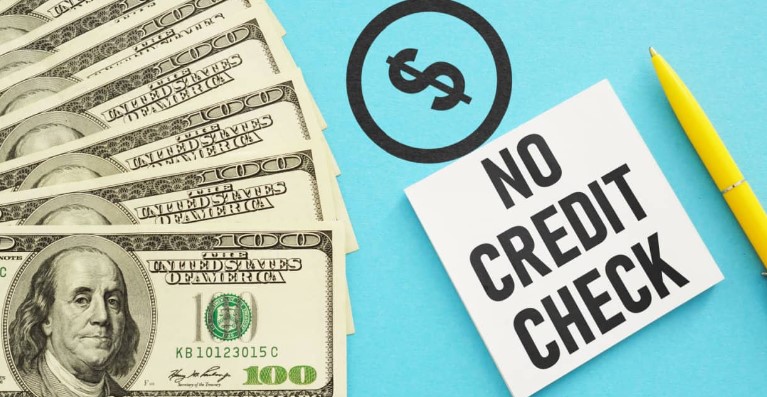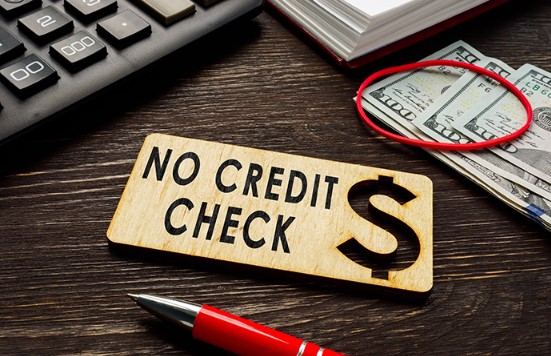Navigating the world of finance can be challenging, especially if you lack a credit history. However, with the right information and guidance, obtaining loans for no credit becomes a feasible option. In this detailed guide, we’ll explore everything you need to know about accessing financial opportunities without a credit background.
Understanding Loans for No Credit

Exploring Alternative Lending Options
When traditional banks turn you away due to a lack of credit history, alternative lending options come into play. From online lenders to credit unions, there are various institutions willing to offer loans tailored to individuals with no credit.
The Importance of Establishing Credit
While loans for no credit provide immediate financial relief, it’s essential to view them as a stepping stone towards establishing a credit history. Timely repayments and responsible financial behavior can pave the way for accessing better loan terms in the future.
Benefits of Loans for No Credit
1. Flexibility in Approval Criteria
Loans for no credit often offer more flexibility in approval criteria compared to traditional lending institutions. While traditional lenders heavily rely on credit scores to assess creditworthiness, lenders offering loans for no credit consider alternative factors such as income stability and employment history.
This means individuals with no credit history or a less-than-perfect credit score have a better chance of securing a loan based on other financial indicators.
2. Opportunity to Build Credit
One of the most significant benefits of loans for no credit is the opportunity they provide to establish or improve credit history. By responsibly managing a loan, borrowers can demonstrate their ability to handle debt and make timely repayments.
This positive payment history contributes to building a favorable credit profile over time, which can open doors to more favorable loan terms and financial opportunities in the future.
3. Access to Financial Opportunities
For individuals without a credit history, accessing traditional forms of credit such as credit cards or mortgages can be challenging. Loans for no credit bridge this gap by providing access to much-needed funds when traditional lenders may decline applications.
Whether it’s covering unexpected expenses, consolidating debt, or funding a major purchase, these loans offer financial support to individuals who might otherwise struggle to obtain credit.
4. Improved Financial Literacy
Securing a loan for no credit encourages borrowers to become more financially literate and responsible. Managing loan repayments requires budgeting skills and financial discipline, which can lead to a better understanding of personal finances.
By actively monitoring their loan obligations and making informed financial decisions, borrowers develop valuable money management skills that serve them well beyond the life of the loan.
5. Diverse Loan Options
The market for loans for no credit has expanded in recent years, offering borrowers a diverse range of loan products tailored to their specific needs. From personal loans to secured loans, borrowers can choose the type of loan that best suits their financial situation and goals. This variety allows individuals to select loan terms, repayment schedules, and interest rates that align with their budget and preferences.
In summary, loans for no credit offer numerous benefits beyond just providing access to funds. From flexibility in approval criteria to the opportunity to build credit and improve financial literacy, these loans empower individuals to take control of their financial future and achieve their goals.
Types of Loans Available
1. Personal Loans
Personal loans are versatile financial products that can be used for various purposes, including debt consolidation, home improvements, or unexpected expenses. These loans are typically unsecured, meaning they don’t require collateral, making them accessible to individuals without a credit history.
Personal loans for no credit often come with higher interest rates to compensate for the lack of collateral, but they provide a valuable source of funds for borrowers in need of financial assistance.
2. Secured Loans
Secured loans require collateral, such as a vehicle, savings account, or valuable asset, to secure the loan amount. Since the collateral serves as security for the lender, secured loans are considered less risky, making them more accessible to individuals with no credit history.
Secured loans may offer lower interest rates compared to unsecured loans, making them an attractive option for borrowers looking to minimize borrowing costs. Additionally, timely repayments on secured loans can help individuals establish or rebuild credit history over time.
3. Payday Loans
Payday loans are short-term, high-interest loans typically used to cover unexpected expenses or bridge gaps between paychecks. While payday loans are easy to qualify for and don’t require a credit check, they often come with exorbitant interest rates and fees, making them a costly form of borrowing. Borrowers should exercise caution when considering payday loans, as they can lead to a cycle of debt if not repaid promptly.
4. Installment Loans
Installment loans allow borrowers to repay the loan amount over time through fixed monthly payments. These loans can be used for various purposes, including home repairs, medical bills, or education expenses.
Installment loans for no credit may have higher interest rates compared to traditional loans, but they provide borrowers with predictable repayment schedules and the opportunity to build credit with consistent, on-time payments.
5. Peer-to-Peer Loans
Peer-to-peer (P2P) lending platforms connect borrowers with individual investors willing to fund their loan requests. P2P loans often have less stringent eligibility criteria than traditional banks, making them accessible to individuals with no credit history.
Borrowers submit loan applications detailing their financial needs and creditworthiness, and investors decide whether to fund the loan based on the borrower’s profile. P2P loans offer competitive interest rates and flexible terms, making them a popular choice for borrowers seeking alternative financing options.
6. Credit Builder Loans
Credit builder loans are designed specifically to help individuals establish or improve their credit history. These loans work by holding the loan amount in a savings account or certificate of deposit (CD) while the borrower makes regular payments towards the loan.
Once the loan is fully repaid, the borrower receives the loan proceeds, and their timely payments are reported to the credit bureaus, helping to build a positive credit history. Credit builder loans are an excellent option for individuals with no credit history looking to establish credit responsibly.
In conclusion, a variety of loan options are available for individuals with no credit history, ranging from personal loans to secured loans and credit builder loans. By exploring these options and understanding their features and implications, borrowers can make informed decisions that align with their financial goals and circumstances.
Application Process
1. Research Lenders
Start by researching lenders who specialize in offering loans for individuals with no credit history. Explore various financial institutions, including online lenders, credit unions, and community banks, to find the best fit for your financial needs and preferences. Look for lenders with favorable terms, competitive interest rates, and positive reviews from previous borrowers.
2. Gather Required Documents
Before applying for a loan, gather all the necessary documents to streamline the application process. While specific requirements may vary depending on the lender, common documents include proof of income, such as recent pay stubs or tax returns, identification (e.g., driver’s license or passport), and, for secured loans, details of the collateral being offered.
3. Check Eligibility Criteria
Review the eligibility criteria set by the lender to ensure you meet the requirements before submitting your application. While lenders offering loans for no credit may have more lenient eligibility criteria compared to traditional banks, they still typically require proof of steady income and age verification (usually 18 years or older).
4. Complete the Online Application
Many lenders offer the convenience of online applications, allowing borrowers to apply for loans from the comfort of their homes. Navigate to the lender’s website or online platform and complete the application form accurately and honestly. Provide all requested information, including personal details, financial information, and loan preferences.
5. Submit Required Documents
Once you’ve completed the online application, you may need to submit supporting documents to verify your identity, income, and other relevant information. Depending on the lender’s requirements, you may be able to upload these documents directly through the online platform or send them via email or fax.
6. Await Loan Approval
After submitting your application and required documents, await approval from the lender. Many online lenders offer quick approval processes, with decisions often made within a matter of hours or days. Be sure to monitor your email or online account for updates on the status of your application.
7. Review Loan Terms
Upon approval, carefully review the loan terms provided by the lender, including the loan amount, interest rate, repayment schedule, and any associated fees. Ensure you understand all aspects of the loan agreement before proceeding.
8. Accept Loan Offer
If you’re satisfied with the loan terms, accept the loan offer as instructed by the lender. This may involve electronically signing the loan agreement or taking further steps to finalize the loan process.
9. Receive Funds
Once you’ve accepted the loan offer and completed any necessary steps, the lender will disburse the loan funds to your designated bank account. Depending on the lender and the method of disbursement, you may receive the funds within a few business days.
10. Begin Repayment
With the loan funds in hand, it’s essential to start making timely repayments according to the terms outlined in the loan agreement. Set up automatic payments if offered by the lender to ensure you never miss a payment and maintain a positive payment history.
By following these steps and carefully navigating the application process, you can increase your chances of successfully obtaining a loan for no credit and accessing the financial assistance you need.
